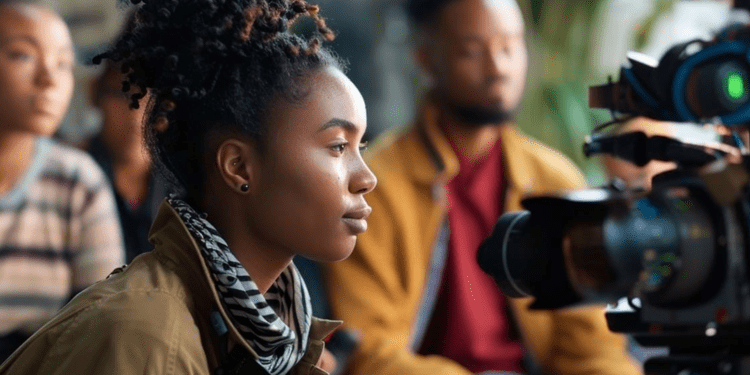The film industry is undergoing a transformative shift, with increasing recognition of the vital need for diversity behind the camera. Women and people of color are stepping into roles as directors, writers, producers, and cinematographers, redefining the narratives that shape our culture. This movement is not only broadening the scope of storytelling but also inspiring future generations to envision themselves as creators and leaders in the world of cinema.
Historically, filmmaking has been a male-dominated field, with women and people of color often relegated to supporting roles or excluded entirely. For decades, the stories told on-screen were limited by the lack of diverse perspectives behind the camera. However, this dynamic is changing. Filmmakers like Ava DuVernay (“Selma,” “13th”), Chloe Zhao (“Nomadland”), and Jordan Peele (“Get Out,” “Nope”) have demonstrated how authentic, inclusive storytelling can captivate audiences while earning critical acclaim and box office success.
This push for representation has also led to structural changes in the industry. Initiatives such as The 4% Challenge by Time’s Up, which aims to increase the number of women directing major studio films, and programs like Sundance Institute’s Diversity Initiative are helping to create pathways for underrepresented talent. Major studios and streaming platforms, including Disney, Netflix, and Warner Bros., have pledged to support diverse creators, funding projects that amplify marginalized voices.
The contributions of women and people of color are enriching the film industry in numerous ways:
- Authenticity in Storytelling: Stories rooted in lived experiences resonate deeply with audiences. Films like “Black Panther” (Ryan Coogler), which celebrates African culture, and “The Farewell” (Lulu Wang), which explores Asian-American identity, highlight the power of diverse narratives. These stories not only entertain but also educate and foster empathy.
- Challenging Stereotypes: By bringing diverse perspectives to the forefront, filmmakers are breaking away from outdated stereotypes. For instance, Greta Gerwig’s “Barbie” challenged traditional gender norms, while films like “Moonlight” (Barry Jenkins) provided nuanced portrayals of Black identity.
- Economic Impact: Representation drives profitability. Studies show that diverse films outperform their less inclusive counterparts at the box office. Audiences are increasingly seeking content that reflects the diversity of their own lives, making inclusion both a moral and financial imperative for the industry.
- Inspiring Future Generations: Visibility matters. Seeing women and people of color succeed behind the camera inspires aspiring filmmakers to pursue their dreams. Programs like Girls Make Movies and organizations like Black Women Film Network are nurturing the next generation of storytellers.
Despite the progress, challenges remain. Women and people of color are still underrepresented in many key roles, particularly in large-scale productions. Pay gaps, limited access to funding, and systemic biases continue to create barriers. However, the momentum for change is undeniable, driven by advocacy, social movements, and the undeniable success of diverse filmmakers.
As the industry embraces inclusivity, the benefits extend far beyond cinema. Films are a powerful medium for shaping culture and influencing societal perceptions. By fostering diversity behind the camera, the film industry is not only creating better stories but also building a more equitable and representative cultural landscape.
In conclusion, the rise of women and people of color in filmmaking is more than a trend; it’s a cultural renaissance. By breaking barriers and redefining narratives, these trailblazers are paving the way for a more inclusive, innovative, and inspiring future in cinema. As their voices grow louder, the world of film becomes richer, more authentic, and undeniably more impactful.










